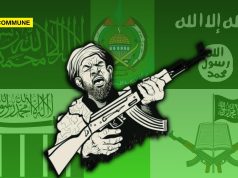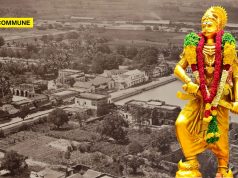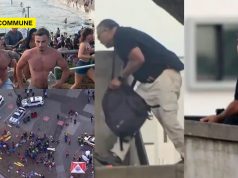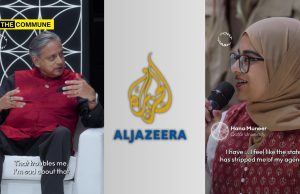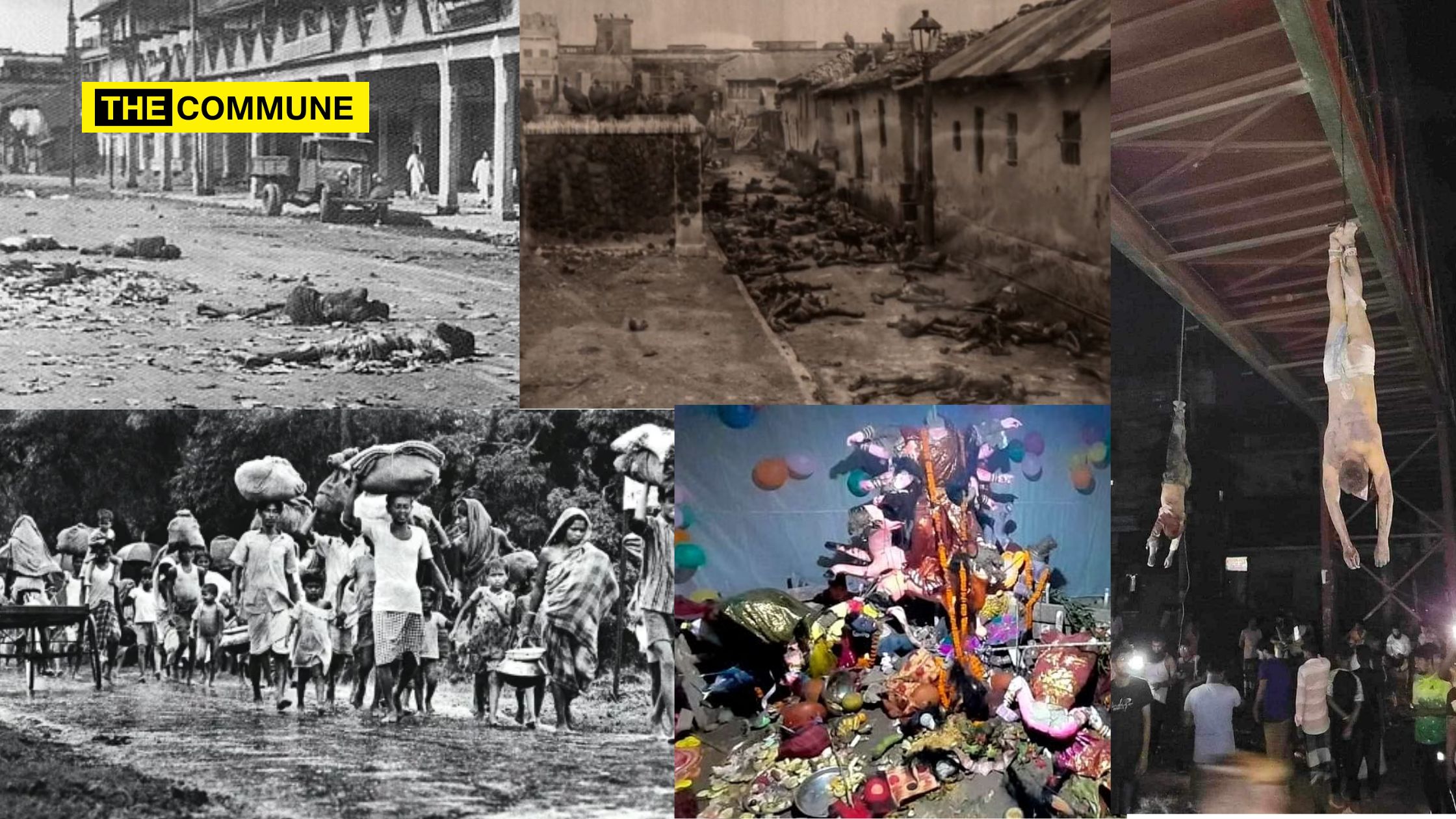
The Hindu community in Bangladesh has endured severe persecution over the decades, starting with the Direct Action Day in 1946 and continuing through various violent periods such as the Noakhali genocide in 1946, the 1971 Bangladesh Liberation War, and recurrent pogroms, including those in 1992 and 2024. These atrocities, characterised by massacres, rapes, abductions, and systematic destruction of Hindu properties, have led to a significant decline in the Hindu population from 28% in 1940 to 8.96% in 2011.
The history of atrocities against Hindus in Bangladesh underscores a persistent pattern of systemic violence and persecution over decades. This ongoing persecution highlights the continuous struggle of Hindus for safety and rights from the earliest days.
1946 – Direct Action Plan
On 16 August 1946, the Muslim League Council declared ‘Direct Action Day’ to emphasise their demand for a separate Muslim homeland following the British departure from the Indian subcontinent. The date was chosen because it marked the anniversary of the Battle of Badr, a significant early victory for Islam. The All-India Muslim League aimed to use violence to intimidate Hindus and their leaders into conceding a separate Muslim-majority country after the British exit.
SN Usman, the Mayor of Calcutta and Secretary of the Calcutta Muslim League distributed a leaflet in Bangla that ominously read:
“Kafer! Toder dhongsher aar deri nei! Sarbik hotyakando ghotbe!” (“Infidels! Your end is not far off! There will be a massacre!”).
The ominous day began with a massive public meeting of the Muslim League at the Calcutta Maidan. Muslim workers from the jute mills of Howrah flocked into the city, heading toward Ochterlony’s needle monument for the grand meeting to ‘celebrate’ Direct Action Day. No representatives from the non-Muslim press attended the gathering. During the event, Suhrawardy, then the Premier of Bengal, boldly declared that he would challenge the British to prevent Mr. Nehru from ruling Bengal. He emphasised that Direct Action Day would mark the initial step in the Muslim struggle for emancipation.
The assembly included a significant number of Muslim hoodlums, whose numbers grew as the meeting concluded. These individuals moved towards the city’s shopping centres, immediately looting Hindu shops and houses. They spread through the town, shouting battle cries such as “Allahu Akbar,” “Pakistan Zindabad,” “Muslim League Zindabad,” “Lekar Rahenge Pakistan,” and “Ladke Lenge Pakistan.”
Then, the torching began. Hindu-populated areas such as the southern part of Amherst Street, Bortola, and Jorasanko were engulfed in flames within no time. Fires blazed through the night, accompanied by war cries of “Allahu Akbar, Ladke Lenge Pakistan.” This persecution continued unabated the next day. An Additional Judge of Alipore Court was killed while trying to save a young boy fleeing from the hoodlums. Until midmorning on the 17th, there was no sign of any policemen.
A mob of violent Islamists attacked Victoria College. All the girls were raped in the classroom, then killed and hung naked from the windows. The naked bodies of Hindu girls were displayed from hooks at Raja Bazar beef shops. Many rapists were armed with iron bars and lathis.
The brutality of the Razakars affected Hindus in Kolkata across various sections, castes, and professions. For example, Rajab Ali led a Muslim mob from Kasai bustee (slum) that set fire to two Hindu slums in Sasthitala, inhabited mainly by Dalits, the so-called lower castes. Suhrawardy personally visited the slum and areas around Narkeldanga main road and Maniktala main road to organise groups of Hindu hunters, ensuring a bloodbath of Hindu corpses.
In another shocking anti-Hindu persecution incident in Metiaburuz, around seven hundred Bihari and Odiya labourers were butchered by a Muslim mob led by local Communist Party leader Sayed Abdulla Farooqui.
On 17 August, Farooqui, President of the Garden Reach Textile Workers’ Union, along with Elian Mistry, a hardline Muslim League hooligan, led a vast armed mob into the mill compound of Kesoram Cotton Mills in the Lichubagan area. Hindu labourers, who were also part of the same union, showed their union cards to the bloodthirsty mobs, only to be laughed at and murdered. Their bodies were chopped and thrown into the river.
In the early hours of 17 August, a Muslim mob ransacked a Hindu household at 25 BudhuOstragar Lane, murdering 25 out of 37 members, looting, and setting the house on fire.
From 18 August, Muslim goons began facing retaliation. Hindu Kalwars from Bihar and U.P. led the charge, soon joined by Sikhs and Hindu Bengalis. Armed with crowbars, swords, and other weapons, they sought to avenge the killings with a ferocity previously unseen. As with Hindu dwellings, there was widespread torching in Muslim areas as well.
Gopal Chandra Mukhopadhyay, affectionately known as Gopal ‘Patha,’ became a symbol of Hindu resistance. He shattered Jinnah and his Muslim League Islamists’ dreams of forcibly including Hindu-majority Calcutta and its surrounding districts in East Pakistan by unleashing a mass genocide during the infamous Direct Action call on 16 August 1946.
Gopal, along with his group of Hindu boys, fought back against the Islamist terrorists starting on 18 August, thus saving millions of Bengali Hindu men, women, and children from certain extinction.
Unfortunately, many of the children of the poor and helpless Bengali Hindu women saved by Gopal in 1946 from the rapist and murderous Islamist gangs during Direct Action in Calcutta have been drawn into communist politics and now defame their saviour as a ‘dacoit’ or a ‘goonda‘. It is crucial to share the true story of this unsung hero of Bengal and India.
Gopal ‘Patha’ saved Hindus from being massacred by the Islamist terrorists of Suhrawardy and Jinnah during Direct Action in 1946.
1946 – Noakhali Genocide
The Noakhali Genocide was a series of organised massacres, rapes, abductions, and widespread looting and arson of Hindu properties. These atrocities were perpetrated by the Muslim community in the districts of Noakhali in the Chittagong Division of Bengal (now in Bangladesh) during October-November 1946, just a year before India’s independence from British rule.
The Noakhali Genocide affected areas covering more than 2,000 square miles, which are under the jurisdiction of Ramganj, Begumganj, Raipur, Lakshmipur, Chhagalnaiya, and Sandwip police stations in Noakhali district and Hajiganj, Faridganj, Chandpur, Laksham, and Chauddagram police stations in Tipperah district.
The massacre began on October 10, coinciding with Kojagari Lakshmi Puja, and continued for about a week. During this period, around 50,000 Hindus were trapped in the affected areas under strict Muslim surveillance, rendering the local administration powerless. In some regions, Hindus had to obtain permits from Muslim leaders to travel outside their villages.
When elections were held in the provinces of India in 1937, the provincial power of Bengal shifted to the Muslims. However, under British rule, Hindus primarily held positions of authority (such as control of zamindari). They were also more advanced in education and economics. With the new Muslim government, educated and financially advanced Hindus were forced to comply with many new laws in various ways.
On August 29 that year, during the occasion of Eid, a group of Hindu fishermen were attacked with deadly weapons while fishing in the Feni River. One fisherman was killed, and two others were seriously injured. In another incident, nine Hindu fishermen from Charuriah were severely assaulted with deadly weapons, resulting in seven being admitted to the hospital.
The Partition Of 1947
After the British departed, the Partition of India created three regions: Bharat, East Pakistan, and West Pakistan. Despite the populations of East and West Pakistan being nearly equal, political power and decision-making were predominantly centralised in West Pakistan.
During the discussions about partition, the then-Prime Minister of Bengal in British India (1946-1947) proposed an independent and united Bengal. However, this proposal was not accepted, and the partition proceeded according to Mountbatten’s plan.
Once the boundaries were established, Pakistan emerged as two geographically and culturally distinct areas, with India situated between them. The authorities in West Pakistan viewed the Bengali Muslims in the East as “too ‘Bengali'”. They considered their interpretation of Islam to be “inferior and impure,” leading to perceptions of the Bengalis as unreliable “co-religionists.” Additionally, Bengali Hindus were often targeted. The West Pakistani authorities attempted to assimilate the Bengali culture into their own.
In March 1948, during a civic reception in Dhaka, Pakistan’s founder, Jinnah, declared that “Urdu and only Urdu will remain as the state language of Pakistan.” This announcement sparked immediate protests from Dhaka University students in front of Jinnah, which led to a military crackdown in East Pakistan.
Army units were deployed to villages, specifically targeting Hindu communities. It was a common practice to kill Hindu men, as the absence of circumcision could identify them. Virtually no area was untouched by this persecution, and there were instances where Hindu women were also massacred.
1971 Genocide
The “71’s genocide” was the horrific ethnic cleansing of Bengalis, particularly Bengali Hindus, in East Pakistan (now Bangladesh) during the Bangladesh Liberation War. This atrocity was carried out by the Pakistan Armed Forces and their allied militia, the Razakars.
On 16 December 1971, Bangladesh achieved independence following a brutal genocide and a protracted liberation struggle against the West Pakistani army. During this period, Hindus across Bangladesh were targeted, with many being killed and their women abducted and raped.
The genocide began on 25 March 1971, when the Pakistani military launched a ten-month campaign against the Bengali and persecution of Hindu communities in East Pakistan. This campaign constituted a clear case of genocide as outlined by the United Nations Genocide Convention. The conflict led to the Bangladesh Liberation War and a subsequent 13-day Indo-Pakistan War. Both wars concluded on 16 December 1971, with Pakistan’s surrender.
To the Pakistani military, Hindu, Bengali, and Indian identities were viewed as interchangeable. Although Hindus were mainly targeted, Bengali Muslims, Christians, Buddhists, and other religious groups also suffered greatly. By the end of March 1971, around 1.5 million Bengalis were displaced, and by November 1971, approximately 10 million Bengalis—predominantly Hindus—had sought refuge in India.
While exact figures are challenging to determine, estimates suggest that around 3 million people were killed and at least 200,000 women were raped. Bangladeshi journalist and policy analyst Anushay Hossain notes that some experts estimate the number of raped women and girls to be closer to 400,000.
Pakistani imams declared Bengali Hindu women as “war booty,” and fatwas were issued, legitimising them as spoils of war. Many of these women either died in captivity, committed suicide, or fled to India.
Countless women were subjected to looting and rape by the Pakistani army during this period. Hindu massacres occurred with disturbing frequency, including the notorious Burunga massacre. On 26 May 1971, the Pakistani military brutally murdered 94 Hindus at Burunga High School. This atrocity is just one of many horrific acts perpetrated against the Hindu population in Bangladesh.
The Pakistani army killed thousands of people, including academics, students, and even sleeping rickshaw pullers, often at close range. Among the notable victims were the respected scholar GC Dev and the eminent academic Jyotirmoy Guhathakurta. Overall, an estimated 3 million people were killed, and more than 10 million were forced to seek refuge in neighbouring India.
How Did It Start?
In 1970, East Pakistan was struck by the devastating Bhola cyclone, and the Pakistani government’s slow response exacerbated the crisis. In the subsequent elections, the Awami League, led by Sheikh Mujibur Rahman, secured a national majority, dominating East Pakistan. However, the West Pakistani establishment obstructed their efforts to form a government.
With encouragement from Zulfikar Ali Bhutto, President Yahya Khan banned the Awami League and imposed martial law. During this period, the Pakistani Army destroyed the Ramna Kali Mandir (temple) and killed around 85 Hindus. On 22 February 1971, General Yahya Khan is reported to have said, “Kill three million of them, and the rest will eat out of our hands.”
In March 1971, the Pakistani Army launched ‘Operation Searchlight’ to suppress Bengali separatist sentiments. The Pakistani state justified this operation by citing anti-Bihari violence by Bengalis earlier in the month. However, political instability in East Pakistan followed, with both Sayyed Mohammad Ahsan, the Pakistani governor, and his successor, Sahibzada Yakub Khan, resigning from their positions. This turmoil allowed Bengali protesters and the Awami League to gain control.
Originally scheduled to begin on March 1, the operation commenced on 25 March. Targets included Jagannath Hall, a dormitory for non-Muslim students at Dhaka University, Rajarbagh Police Lines, and Pilkhana, the headquarters of the East Pakistan Rifles. Neighbourhoods in old Dhaka with significant Hindu populations were also attacked. On that night, American journalist Robert Payne estimated that 7,000 people were killed and 3,000 were arrested.
The first report on the Bangladesh genocide was published by West Pakistani journalist Anthony Mascarenhas in The Sunday Times of London on June 13, 1971, under the headline “Genocide.” Mascarenhas wrote: “I saw Hindus hunted from village to village and door to door, shot on sight after a cursory ‘short-arm inspection’ revealed they were uncircumcised. I heard the screams of men bludgeoned to death in the compound of the Circuit House in Comilla. I saw truckloads of other victims and those who tried to help them being hauled away ‘for disposal’ under the cover of darkness and curfew.”
During the war, a fatwa from West Pakistan declared that the Bengali freedom fighters were Hindus, and their women could be considered “booty of war.”
By early December 1971, Pakistani forces began a campaign of retaliation, targeting and killing around 1,000 intellectuals and prominent Bangladeshis. However, on 16 December 1971, West Pakistan’s military forces surrendered abruptly as tensions between India and West Pakistan reached a critical breaking point.
1992: Babri Demolition Led To Temple Destruction In Bangladesh
The 1992 Bangladesh pogroms were a series of violent attacks against Bengali Hindus carried out by Islamist groups in response to the demolition of the Babri Masjid. This persecution, fueled by long-standing hatred and a desire for revenge dating back to 1947, began in December 1992 and continued until March 1993.
On 7 December 1992, the Dhakeshwari Temple was attacked, and the Bholanath Giri Ashram in Dhaka was looted. Hindu-owned jewellery shops in old Dhaka were also looted, and Hindu houses in Rayerbazar were set on fire. The novelist Taslima Nasreen described the attack on the Dhakeshwari Temple in her book ‘Lajja’, noting that the main temple was burned.
The riots disrupted the SAARC Quadrangular cricket tournament. On 7 December, a mob of around 5,000 Muslims armed with iron rods and bamboo sticks attempted to storm the Dhaka National Stadium during a match between Bangladesh and India A. The police responded with tear gas and rubber bullets, but the game was abandoned after 8.1 overs. Although the match was rescheduled for December 10 and the final between India A and Pakistan A for December 11, both were ultimately cancelled.
On 8 December 1992, violence against Hindus erupted in Kutubdia Upazila in Cox’s Bazar District. Muslim mobs attacked 14 Hindu temples, burning eight and damaging six. In Ali Akbar Dale, 51 Hindu houses were destroyed, and another 30 in Choufaldandi were also attacked. In Sylhet, one house was set on fire in the town centre, and ten temples were torched. In Chittagong District, the villages of Fatikchari and Mireswari were wholly burned, and five Hindu temples, including Panchanan Dham and Tulsi Dham, were attacked and damaged.
By the time the violence subsided, it was reported that ten people had been killed, and numerous Hindu temples and homes had been destroyed. Jamaat-e-Islami, an ally of the ruling Bangladesh Nationalist Party (BNP), was involved in the persecution.
In October 1990, over two years before the actual demolition of the Babri Masjid, a rumour spread in Bangladesh that the structure had been destroyed. This led to widespread violence, resulting in the demolition of over 3,500 temples and sexual assaults on more than 2,400 Hindu women. Hindu properties were set ablaze, and the ‘Human Rights Congress for Bangladesh Minorities (HRCBM) reported that these attacks occurred in the presence of police authorities. The report detailed that during 1989-90 alone, over 1,000 women were raped, hundreds of temples were demolished, and Hindu homes were looted and burned.
2021 – Bangladeshi Hindu Genocide Following Lies Spread About Blasphemy
On 11 October 2021, the Hindu festival of Durga Puja began, celebrating the goddess Durga’s victory over evil. The festivities were marred by violence starting on 13 October 2021 when a provocative Facebook post surfaced, showing a Durga idol with her foot on the Quran instead of the devil’s body. This post, believed to have been intentionally created to incite violence, led to widespread unrest.
Investigations revealed that Iqbal Hossain, a Muslim man with psychological issues, had placed the Quran in the Hindu temple. However, the inflammatory post incited violence that continued beyond the Durga celebrations. Over 100 people were injured, at least six were killed, and mobs of up to 500 people attacked 80 Hindu temples. Additionally, 66 homes were vandalised, and 22 were set on fire by 19 October 2021.
Unabated Persecution of the Hindu Community In Bangladesh
In the lead-up to the Bangladesh elections, the Hindu community faced increasing political persecution. Many Hindu families in Shailkupa Upazila, Khulna Division, were forced to leave their homes and sell them at low prices to escape religious persecution.
According to a report by Kalbela News, the minority community was subjected to persecution threats from Islamist groups, leading many Hindu families to migrate to other parts of the country. Over the past few years, there have been reports of more than 1,000 attacks on temples and Hindu homes, as well as thousands of sexual assaults on Hindu women.
Bangladesh Hindu Population
The Hindu population in Bangladesh has experienced a steady decline over the years, falling from 28% in 1940 to 8.96% in 2011. This decline includes two significant periods: the first around the time of partition and the second during the 1971 Bangladesh War, which led to the country’s liberation.
Despite Bangladesh’s overall population more than doubling over the past 50 years, the number of Hindus has decreased by approximately 7.5 million (75 lakh). In contrast, the numbers of Buddhists, Christians, and individuals of other religions have remained relatively stable.
Violence Against Hindus In 2024
Approximately 500 people have died in violent protests related to quota demands, with the majority being Hindus. These protests are also being used as an excuse for Hindu persecution.
Anti-government demonstrators marched to Dhaka and stormed the Prime Minister’s palace, resulting in a weekend of violence that left dozens dead. In response, the military imposed an indefinite curfew, and authorities cut off internet access to curb the unrest.
In Bangladesh, Muslim mobs have caused significant havoc for minority Hindus. Reports from 27 districts indicate widespread minority persecution attacks, including the burning of Hindu homes, looting of shops, and vandalism of temples.
The protests, which began in July with students opposing a controversial quota system for government jobs, have attracted hundreds of thousands. The situation turned violent on July 16 when clashes erupted between protesters, security officials, and pro-government activists. The Supreme Court intervened to reverse the decision, but renewed anti-government demonstrations continued through the weekend, sparking further violence.
The ongoing protests have become a significant crisis for Prime Minister Sheikh Hasina, ending her 15-year rule. On 5 August 2024, fearing for her safety, Hasina fled the country on an Air Force jet and resides in India.
Following her departure, on 6 August 2024, separate Dhaka Metropolitan Magistrate Courts granted bail to 2,200 members of the Bangladesh Nationalist Party (BNP) and the banned Jamaat-e-Islami. These individuals had been jailed due to the recent turmoil over the quota reform movement.
BNP standing committee members Amir Khasru Mahmud Chowdhury, Nazrul Islam Khan, Senior Joint Secretary General Ruhul Kabir Rizvi, Shamsur Rahman alias Shimul Biswas, Saiful Alam Nirob, Rafikul Alam Maznu, Jamaat Secretary General Mia Golam Parwar, and Bangladesh Jatiya Party Chairman Andaleev Rahman Partho were among those granted bail.
Other released inmates include members of the banned Islamist group Jamaat-e-Islami Bangladesh, which has been causing chaos on the streets following Sheikh Hasina’s ouster and targeting minority communities, particularly Hindus.
Since Sheikh Hasina’s fall, Jamaat-e-Islami members have been compiling lists of Hindu businesses and homes for persecution. Hindus, fearing for their safety, have reported that many are unable to relocate due to the presence of armed Jamaat-e-Islami and other Islamist groups patrolling the streets.
Jamaat-e-Islami, an Islamist organisation inspired by the Muslim Brotherhood, was founded in 1941 by theorist Syed Abul Ala Maududi in British India. After the partition of India, the organisation evolved into Jamaat-e-Islami Hind, Jamaat-e-Islami Pakistan, Jamaat-e-Islami Bangladesh, and Jamaat-e-Islami Kashmir.
The historical and ongoing pattern of persecution of the Hindu community in Bangladesh is a deeply troubling chapter in India’s neighbourhood. The persistent violence, persecution, discrimination, and displacement of these Hindus are a stark reminder of the fragility of Hindu lives in such countries that don’t curb the radical Islamist’s hatred for non-Muslims.
Subscribe to our channels on Telegram, WhatsApp, and Instagram and get the best stories of the day delivered to you personally.

